Affiliates note: As an Amazon Associate I earn from qualifying purchases. My content may contain affiliate links to products and services. If you click through and make a purchase, I'll receive a small commission. It does not affect the price you pay.
How to Make Fruit Scrap Vinegar
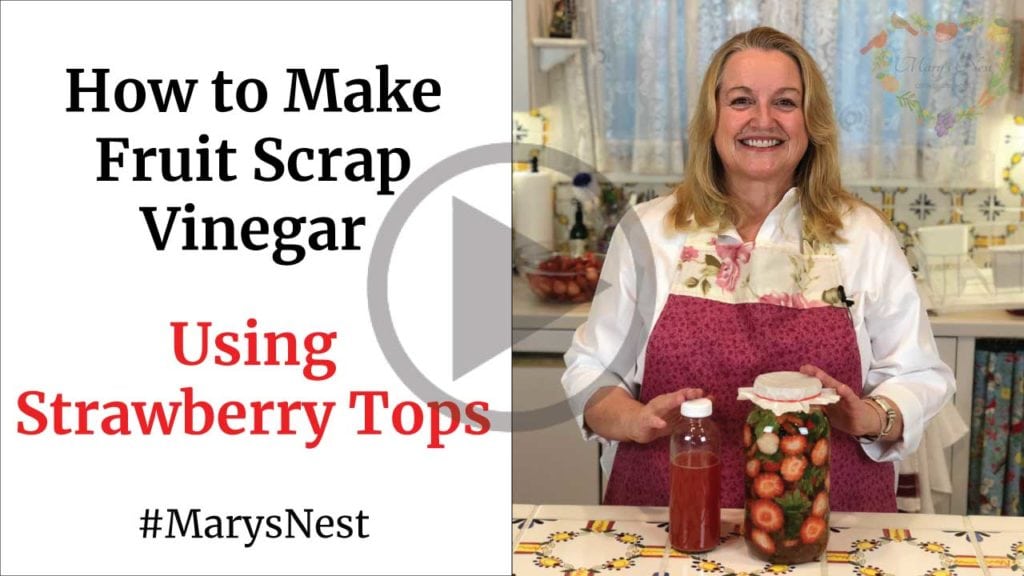
I’d like to receive more tips and recipes from Mary’s Nest.
Making vinegar from fruit scraps is so easy—and it basically costs you nothing. You can make a delightful fruit scrap vinegar from items you might throw out or throw into the compost pile.
Affiliates note: As an Amazon Associate I earn from qualifying purchases. My content may contain affiliate links to products and services. If you click through and make a purchase, I’ll receive a small commission. It does not affect the price you pay.
Fruit Scrap Vinegar and a No-Waste Kitchen
In my tutorial video and printable recipe, I’ll show you how to make fruit scrap vinegar step-by-step. It’s easy!
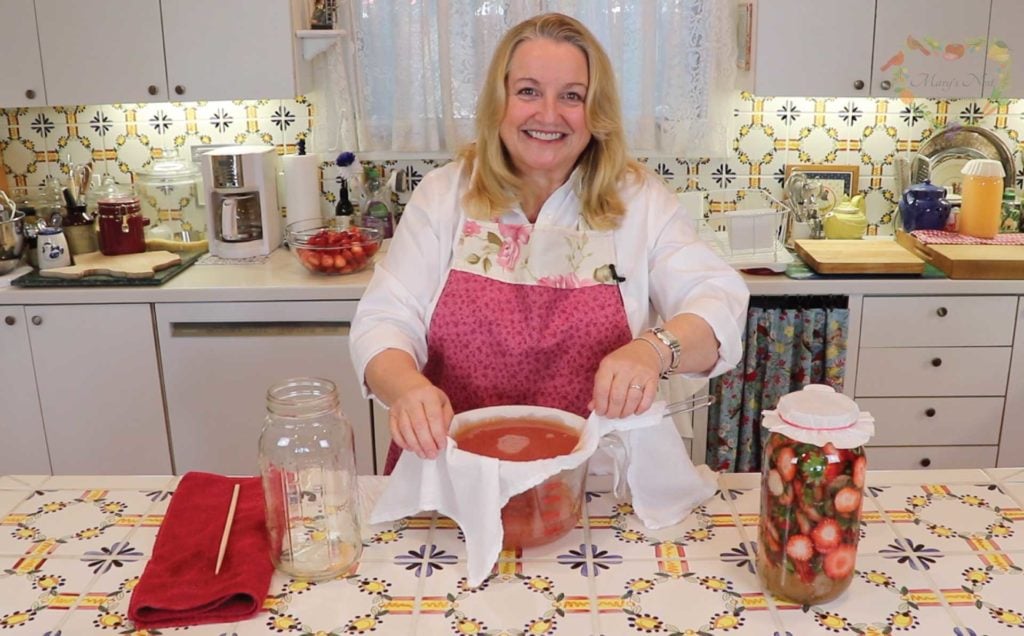
So next time you are cutting up some strawberries, save the scraps and make vinegar. You’ll have a tasty strawberry fruit scrap vinegar and a no-waste kitchen!
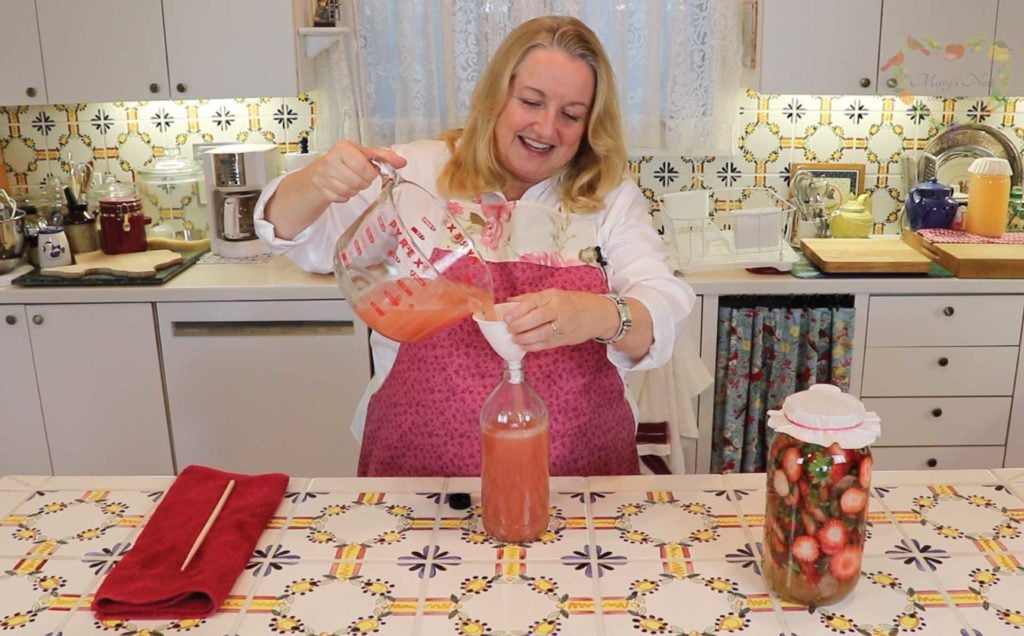
And a nice side benefit, the jar will look lovely sitting on your kitchen counter while it turns into vinegar!
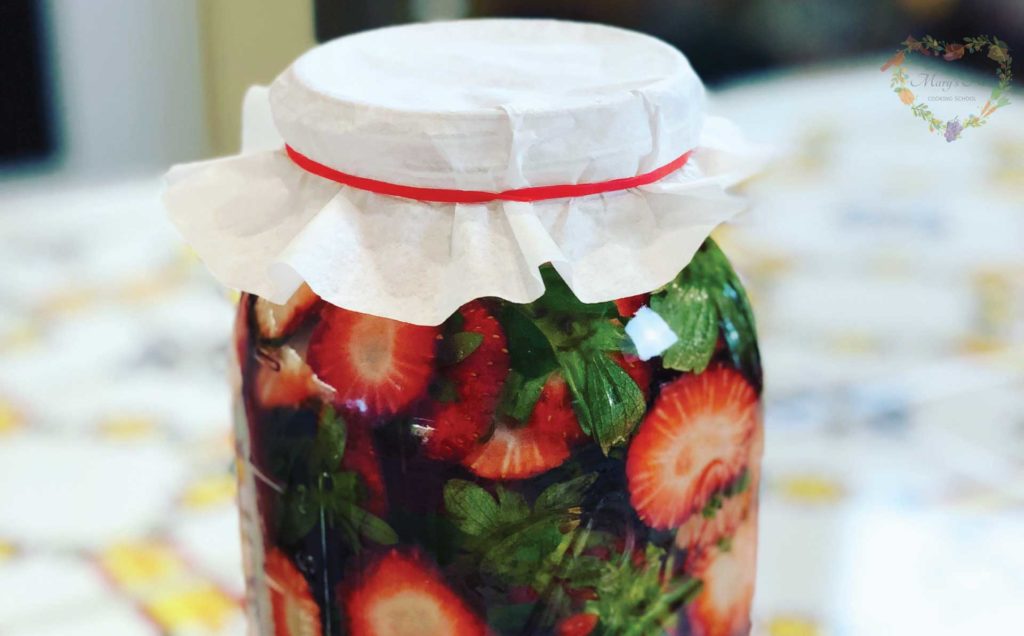
Testing Your Homemade Vinegar
Your vinegar should have developed after 30 days. You can test your homemade vinegar by:
- Smell
- Taste
- Using a pH strip

How to Use a pH Strip
As I show you in my recipe video, here are the steps to use a pH strip:
- Pull out a piece of the pH strip
- Dip the pH strip in your vinegar
- See what color the strip turns into and compare it against your pH chart
If you use a pH strip, you are looking for a pH that’s lower than 4.5.
Alternatively, you can dip your stirring chopstick into your vinegar and have a few drops fall on the pH strip if you don’t want to dip the pH strip into your vinegar.
Using Your Homemade Vinegar
Your fruit scrap vinegar is amazingly multipurpose. Here are just a few ways you can use it:
- Cleaning
- Hair rinse mixed with water
- Salad dressings
Since the pH is not standardized with homemade vinegar, you should not use your vinegar for canning or pickling.
Apple Cider Vinegar
Like strawberry fruit scrap vinegar, making Apple Cider Vinegar is a lot of fun, and it’s an essential skill for traditional foods home cooks. You can use Apple Cider Vinegar in many recipes. Discover how to make this vinegar from scratch with my three-part video series that’s perfect for beginners.
More Recipes for a No-Waste Kitchen
Once you’ve created your strawberry fruit scrap vinegar, try these other recipes for a no-waste kitchen.
And I also show you how to regrow kitchen scraps so you can create a recurring harvest.
Download Your Free 36-Page Pantry List
For an extensive list of the traditional foods you can make and purchase to stock your pantry, be sure to download my free 36-page Traditional Foods Pantry List. This comprehensive eBook is full of links to recipe videos, helpful articles, and more!
Kitchen Academy Videos
Are you looking for more traditional foods videos? I invite you to join the Traditional Foods Kitchen Academy. Members of this optional paid YouTube community get access to exclusive videos, live streams, and other members-only perks. Plus, your YouTube comments include a special members-only badge.
In the following members-only videos, I talk about How to Equip Your Traditional Foods Kitchen. You’ll discover all the essential and optional equipment you need to make fruit scrap vinegar, bone broth, sourdough, and more!
Trending Posts on Mary’s Nest
Stay in Touch with Mary’s Nest
- Subscribe to My YouTube Channel for Traditional Foods Videos (Free) - When you subscribe, be sure to click on the notification bell that will let you know each time I upload a new video.
- Subscribe to Mary’s Traditional Foods Newsletter (Free) - Get a free 36-page eBook for signing up: How to Stock Your Essential Traditional Foods Four-Corners Pantry.
- Join the Traditional Foods Kitchen Academy (Optional Paid) - For more detailed videos and exclusive members-only perks, join my YouTube membership community.
- Order The Modern Pioneer Cookbook (Optional Paid) - Get a printed book of Mary's nourishing recipes from a Traditional Foods Kitchen. This bestselling cookbook is published by Penguin Random House with their DK imprint.
I look forward to having you join me in my Texas Hill Country Kitchen!
How to Make Fruit Scrap Vinegar Using Strawberry Tops
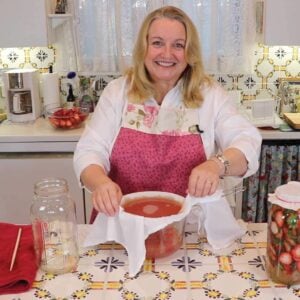
Ingredients
- 1-2 cups Strawberry tops or other fruit scraps
- ½ cup Cane sugar divided
- 8 cups Spring water
Instructions
- Add the fruit scraps to a 1/2 gallon glass jar.
- Add 1/4 cup sugar.
- Fill a jar with spring water.
- Stir well and cover the jar with a coffee filter or clean cloth and secure with a rubber band.
- Stir the contents of the jar daily. A wooden toothpick can be useful for this purpose.
- After a few days, add the remaining 1/4 cup of sugar to the jar and stir well to incorporate.
- Continue to stir the contents of the jar daily.
- After 30 days, vinegar should have developed. Test by smell, taste, or using a pH strip. If you use a pH strip, you are looking for a pH lower than 4.5.
- Once you are satisfied with the taste of the fruit scrap vinegar, strain out the fruit and decant the vinegar in a clean glass bottle with a top.
Video
Notes
Nutrition
Shop for items used in this blog post or video
Favorite Kitchen Supplies
- Favorite Aprons
- Whisk
- Silica Gel Packets (Helps keep moisture from building up in your mix)
- Cast Iron Dutch Oven
- 8-Quart Slow-Cooker
- Fat Separator (Clever kitchen device to help you decant bone broth)
- Flour Sack Towels
- pH Strips
More Kitchen Supplies with Discount Codes
- Mockmill Grain Grinder (for making homemade flour)
Learn more about Mockmill electric grain mills for making fresh flour and their Flake Lover's Flaker that flakes whole grain in minutes.
Use promo code MARYSNST for a one-time 15% off Masontops and Breadsmart products on Amazon.com.
Amazon Shop and Shopping Guide
- Visit Mary’s Nest Amazon Shop
- Visit my Shopping Guide page
Get up to 15% off for stocking your Traditional Foods Pantry and equipping your Modern Pioneer Kitchen, including discounts from US Wellness Meats, Farmhouse Teas, Lehman's, Masontops, Cultures for Health, Survival Garden Seeds, Redmond Real Salt, Plan to Eat, and More!
Recommended Reading
Disclaimer:I am not a medical doctor, a medical professional, a dietician, or a nutritionist. All content found on the MarysNest.com website, including text, images, videos, eBooks or eGuides, social media, or other formats, were created solely for informational purposes only. The content is not intended to be a substitute for professional medical advice, diagnosis, or treatment. Always seek the advice of your physician or other qualified healthcare provider with any questions you may have regarding a medical condition or proper nutritional advice. Never disregard professional medical advice or delay in seeking it because of something you have watched in a video or read on this website. Use caution when following the recipe in this video. The creator and publisher of this video and website will not be held responsible for any adverse effects that may arise from the use of this recipe and method or any other recipe and method on this website or corresponding video channel.
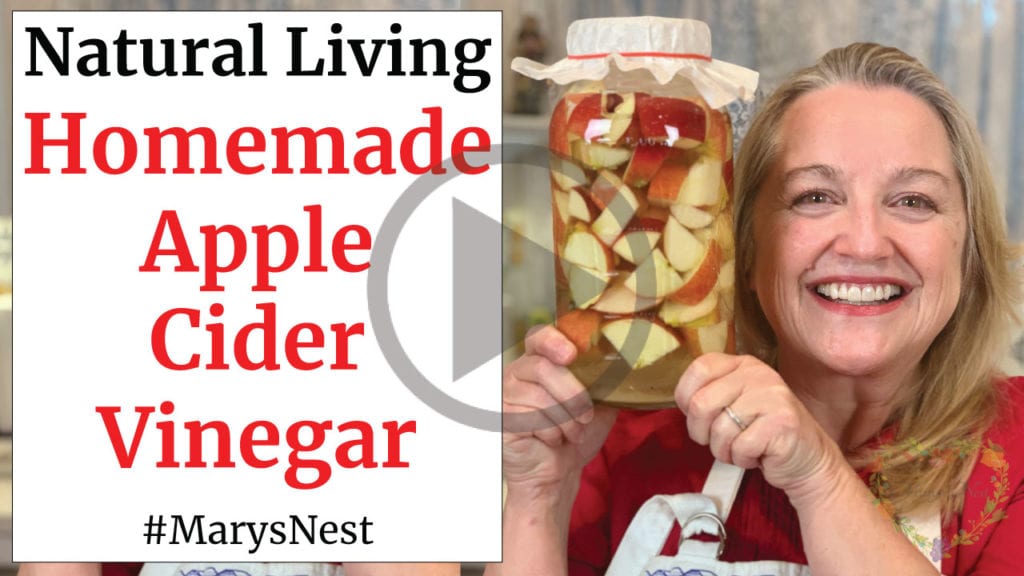

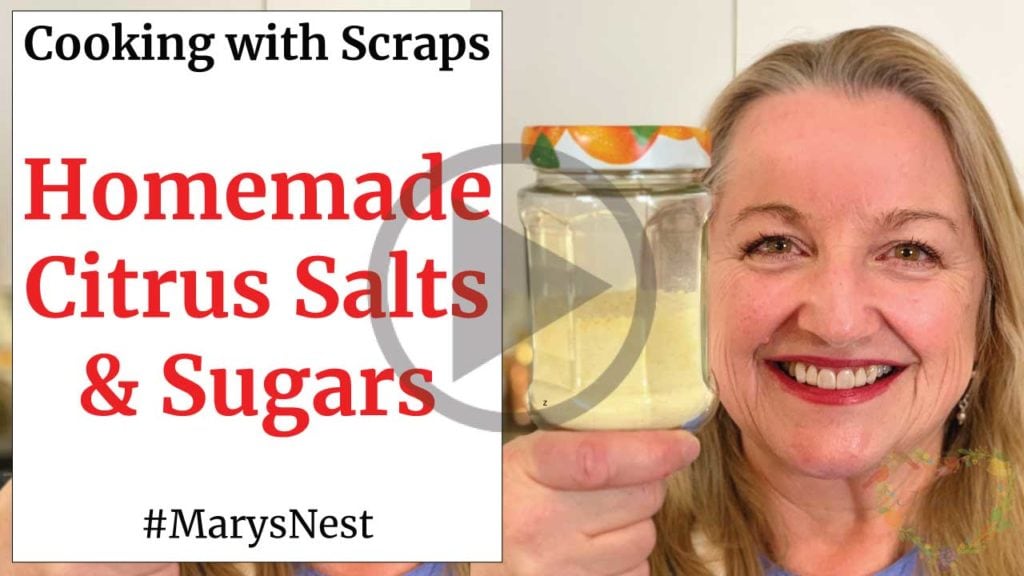
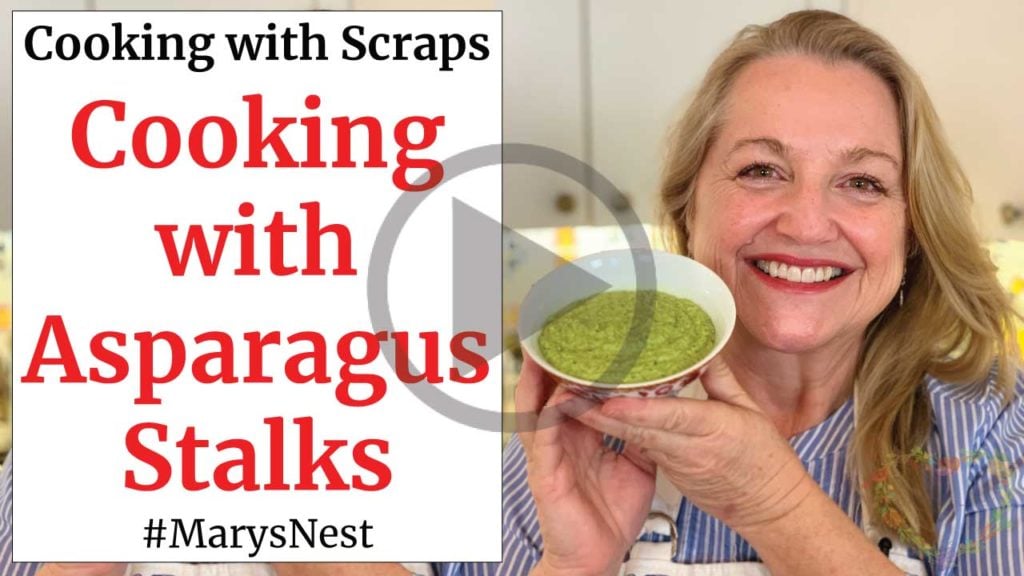
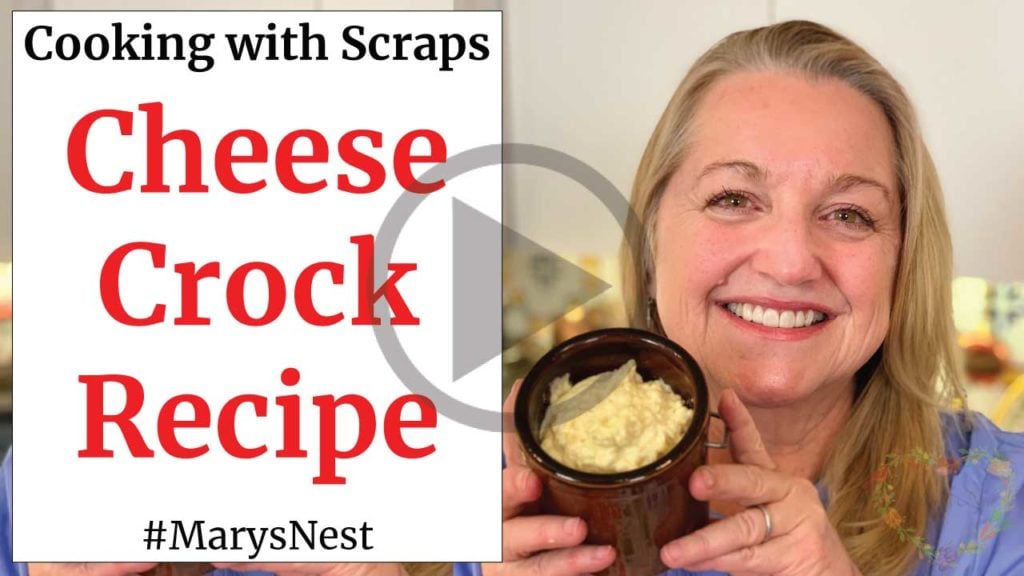
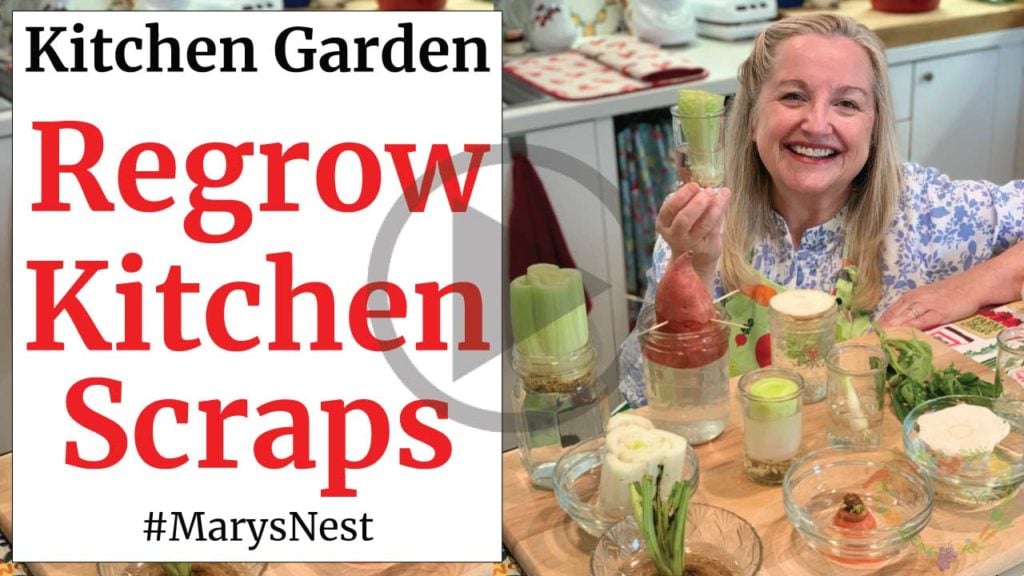

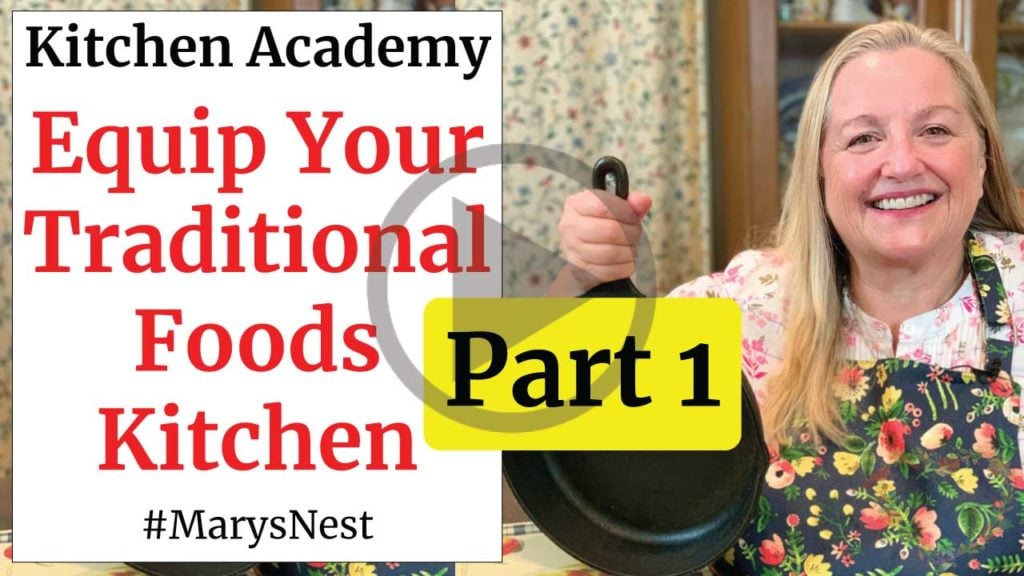

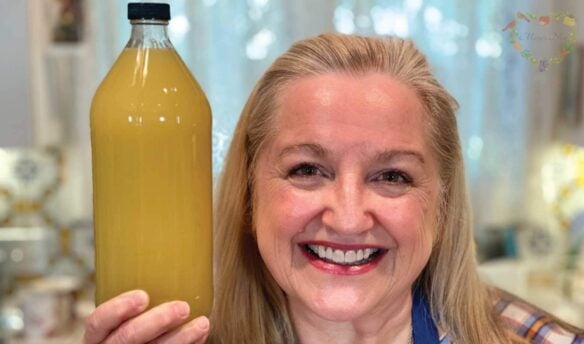

Thank you for your super helpful videos! I am looking forward to your cookbook (which I have pre-ordered!) I have had my strawberry scraps brewing for about 2 1/2 weeks. You mentioned the white film on top so I have not been worried about that. This morning the top looks different. It has bubbles all along the surface. They are clear. They just looking like bubbles but they are covering the top instead of the white film. Is this to be expected? Thank you!
Hi Helen,
It’s fine for your vinegar to develop bubbles during the 30 day fermentation process. Just remember to stir your contents daily, and use a pH strip at the end of the process to make sure your pH is lower than 4.5.
If at any time your vinegar takes on an odd odor or mold develops, I recommend that you discard it and start over.
Thanks so much for your kind comment and for preordering my cookbook!
Love and God bless,
Mary
Making this with Fredericksburg peach today. Sacrificed one to have a yummy salad vinegar. Cut the recipe down to about 1/3…didn’t follow exact proportions (math!) but hope it turns out good!
Thanks!
Holly
Hi Holly, Hope it turns out great! Those are wonderful peaches!! Love, Mary
Hi Mary, think I received my answer: my small jar of strawberry vinegar looks on top like: yeasty, mold; from blog, guess that is ok? I guessed @ the amt of sugar since I just had enough scraps for a small jar.
I just bought 9 baskets; going for the “big jar”! Thanks. Love your videos; such a smart lady!
Sandra Kunkle
sjkunkle@comcast.net
Hi Sandra, Thanks so much for the kind words! A white film on top of a vinegar ferment is usually kahm yeast. It’s not problematic – just a pest! You can try to skim it off but it usually comes back. But when the vinegar becomes very acidic it will most likely disappear. If it is fuzzy and possibly multi-colored, it is mold and should be discarded. Some people just skim off the mold and carry on because they believe that as the acidic level increases, the environment for mold will not be hospitable so all the mold will die but I am not comfortable with that. Love, Mary
Thank you for such wonderful videos. Very informative. I made strawberry and it turned to vinegar in 3 weeks. It was fantastic and everyone in my family loved it. I just started peach a week ago and it is bubbling and I smell vinegar already. If the ph drops to 4.3 or 4.5 and the bubbles stop is it done even if it’s early? Or should I make sure it’s closer to the 30 days? I remember you said in another video to slow it down put it in the refridgerator. If it turns quickly into vinegar is that a good thing or bad. Thanks again.
Hi Patricia, I am SO happy to hear that you are enjoying the vinegar! Yes, it can ferment quicker than 30 days – especially in warm weather. Many people like their vinegar at around 4.5. You do not need to get it down to 3.0. Yes, with ferments, you can slow things down by putting it in the fridge but you really don’t need to worry about that with vinegar. The process can go quickly from fruit water, to a mild alcohol, to vinegar. As long as it starts to smell “vinegary” and no longer “yeasty” or “beer like”, your vinegar is ready. Great job! Love, Mary
Hi! Thanks so much for your recipe and video. I tried it and got a great citrus vinegar. I tried again using saved strawberry scraps I collected and froze. Followed the recipe, adding a second 1/4 c sugar after 3 days. Unfortunately, the bubbling stopped. It’s been two weeks and still no vinegar smell, it just smells like sweet strawberries. There’s a white film on top like kahm yeast but no mold or anything unpleasant. How do I jump start the acetobacter?
Hi Mercedes, This is a great question. As I have shared with many folks, ferments of any type can be VERY persnickety! Since there is no mold, I might try continuing to stir and give it another week. I wouldn’t add any more sugar. Actually, sometimes too much sweetness can actually slow the process. Maybe the strawberries were very sweet and the bacteria is slow to eat all the natural sugar. Keep me posted – and keep giving the ferment daily stirrings – really good stirrings to incorporate a lot of air. Love, Mary